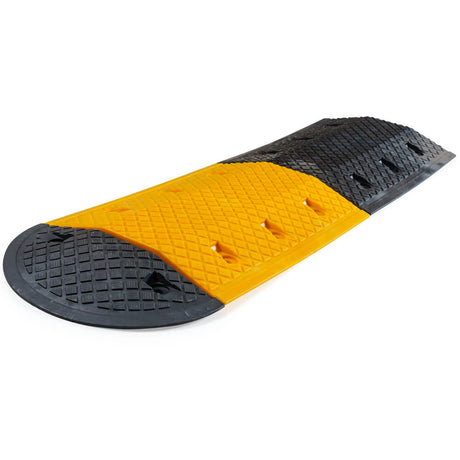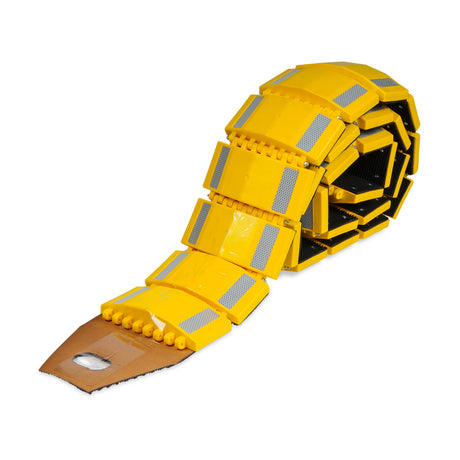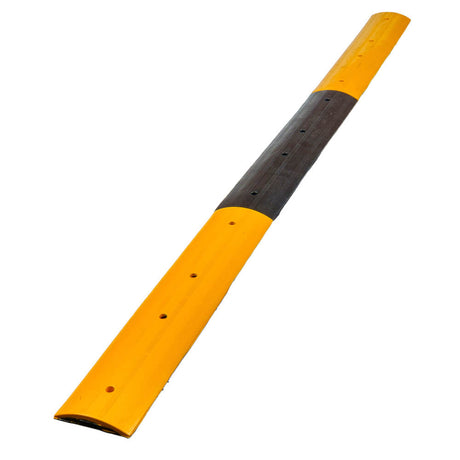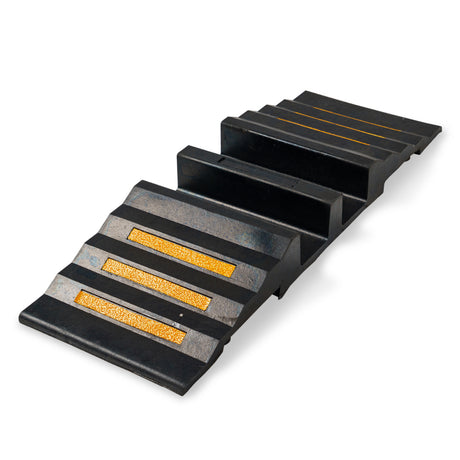Speed Humps
Speed humps are an effective solution for slowing down traffic, improving safety, and preventing speeding in high-traffic areas.
- Featured
- Best selling
- Alphabetically, A-Z
- Alphabetically, Z-A
- Price, low to high
- Price, high to low
- Date, old to new
- Date, new to old
FiltersFilter & Sort
More About Speed Humps
Features & Benefits of Speed Humps
1. Durable – All of our traffic calming products are designed with durability in mind. They’re high quality and designed for heavy duty use. Our speed bumps and wheel stops do not crack or shrink, they are built tough for Australian conditions. They can be used indoors or outdoors in areas like schools, hospitals, and multi storey car parks.
2. Modular design – The range of speed humps we sell are 250mm, 500mm, or 1000mm in length based on your choice of material. This makes it easy for you to achieve the lengths you need. The end caps help you finish off the edges perfectly.
3. Manufactured from environment-friendly materials – Our products are mostly designed with environment friendliness in mind. They are either recyclable or made of recycled products, such as our heavy duty rubber speed humps.
4. Built-in prismatic reflectors – Safety is our number one priority. The built-in prismatic reflectors increase visibility of the speed humps at night, improving their effectiveness in controlling traffic even with low lighting.
5. Low noise – The rubber and plastic products are designed for low noise, which makes them useful in residential areas, and near schools and hospitals where high noise levels can be disturbing.
6. Lightweight – Our speed humps are lightweight, making it easy for installation to be completed by a single person.
Our road safety products are designed with quality in mind. We follow Australian standards and use materials that reduce our carbon footprint. We even use recycled rubber as part of our environmental advocacy. Reach out to us now for more information about road safety products that can be used for your site.
Frequently Asked Questions (FAQs)
What are the Australian Standards for Speed Humps?
Design:
The Australian design standard for speed humps regulating off-street parking is AS 2890.1:2004. There are 4 main criteria that a product should keep in mind to be compliant to this standard. They are:
1. Height – The height of the product should be between 25mm and 75mm.
2. Cross section – The product should have a flat top. It should not be peaked or rounded. The flat-top area should measure between 100m to 150mm.
3. Ramp angle – The ramp angle and the height should be in the ratio 2:1.
4. Markings – It must have alternating parallel stripes in yellow or white with the base colour being black. The alternating stripes should be 250mm wide.
Use and placement:
The standard requires the use of the humps in the following ways:
1. They are used to reinforce limits on vehicle speeds in busy areas.
2. They are appropriate for smaller or confined spaces like off-street parking, multi-storey car parks and other such areas where the speed of the vehicles is typically less than 30 km/h or less.
3. They should be at least 10m apart along any aisle or roadway.
4. The maximum spacing is 50m when the speed must be continuously controlled along a roadway.
5. You must not place them on intersections or curved roadways.
6. They should not obstruct pedestrian or wheelchair traffic in an accessible travel path intended for people with disabilities.
What is Traffic Calming?
A lot of our roads experience both vehicle and foot traffic. These spaces require a higher level of traffic management than areas where foot traffic is relatively low. Fast vehicles in these areas present a greater risk to property and lives. Traffic calming is using products like speed humps to help slow and calm traffic in these areas, making them safer for both road users and pedestrians.
Our speed humps are much easier to install and implement than more aggressive traffic calming means, like allowing one-way traffic in a street, or building roundabouts or chicanes. They’re effective in slowing traffic and having a better flow of vehicles in busy areas.
Speed humps are very easy to install in concrete or asphalt. This makes them ideal for controlling traffic and ensuring pedestrian safety in an area which does not have planned traffic control measures in place.
Are Speed Humps Effective?
Any traffic calming measure is only as effective as its design, build, and installation. When done correctly, they can be very effective. Using speed humps together with speed limits and other traffic management methods can be a powerful combination to create safer roads and encourage responsible driving behaviors.
Typically, a speed hump is made of rubber, plastic, or metal, but sometimes, they may even be built from concrete or asphalt. Plastic or rubber speed humps are often the best choice because they are easy to install and remove. Traffic calming products made of rubber or plastic are also lightweight. They can be installed temporarily and removed when required, and later reinstalled.
Since rubber has greater compression, traffic control products made of rubber are beneficial for vehicles as well. If a vehicle hits these very quickly at an angle, there is less chance of damage. Since they are low to the ground, it also reduces damage to vehicles with low ground clearance. But for the same reasons, rubber speed humps may end up being less effective at traffic control than concrete or asphalt bumps.
However, concrete and asphalt bumps are ideally installed in areas that do not experience heavy industrial traffic, as they may be rendered ineffective or may get damaged very quickly.
Speed bumps can be combined with other road safety products like bollards to improve their effectiveness in traffic calming.
Need Help Finding the Right Speed Hump?
Still not sure which style of speed hump is the right one for your project? Whether you’re in need of a heavy duty steel speed hump for your heavy vehicle or a plastic portable speed hump for your neighborhood, you can talk to our team of experts today for advice and assistance by calling 1300 854 010.








